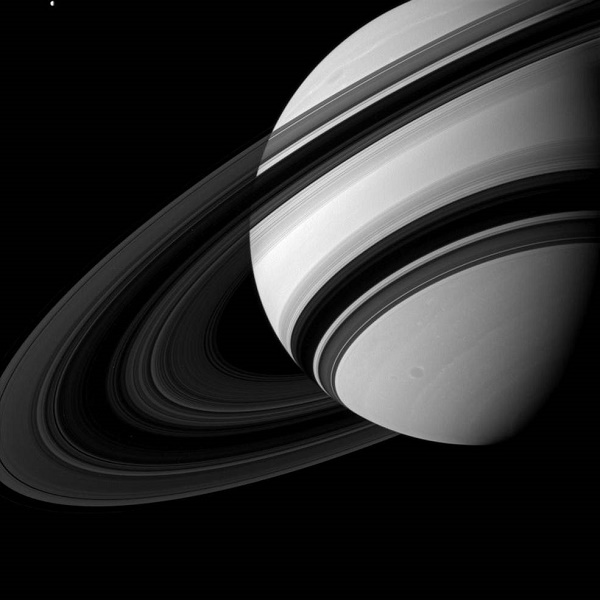By Ana Verayo, | February 29, 2016

Saturn's B ring is the most opaque of the main rings, appearing almost black in this Cassini image taken from the unlit side of the ringplane.
For most of us, Earth's weather billions of years ago was quite unimaginable and even unpredictable but now, astronomers can now reveal what the planet's weather was like during its early formations from climate data from Saturn and Jupiter, providing insight about Earth's ancient atmosphere.
Professor Liming Li from the University of Houston is now heading a team of scientists from NASA's Jet Propulsion Laboratory and the University of Wisconsin-Madison to examine and analyze data that was obtained by the scientific onboard instruments of NASA's Cassini spacecraft. The probe is currently completing a mission exploring Saturn's systems.
Like Us on Facebook
To help fund two new projects for this study, NASA's Planetary Science Division granted Li's team worth US $700,000 to further study the alien climate of other planets in the solar system with the help of Cassini.
Cassini currently boasts a suite of 12 scientific instruments that aim to provide access to crucial data from this mission. The spacecraft's primary mission ended in 2008 but since the probe was successful in gathering data, NASA officials extended the project several times where it is finally scheduled to end next year.
For the team's projects, they will calculate the energy budget of Jupiter, Saturn and Saturn's moon Titan to provide a better understanding of planetary evolution along with its evolving climate.This "energy budget" involves the amount of energy received from the sun that penetrates the planet's climate system and how much light energy is emitted.
Li says that on Earth, the planet's incoming energy is equal to outgoing energy. Even with the effect of trapped greenhouse gasses, the temperatures still do not go dramatic changes. For Saturn and Jupiter, Li says that the massive planets exude more energy that they absorb, which means they generate internal heating.
Titan is more similar to Earth, as it does not have any significant internal heat. Li and other planetary scientists believe that Titan's atmosphere resemble Earth's ancient atmosphere. By studying Saturn's moon and its tenuous atmosphere, a number of clues can be revealed leading to the Earth's past atmosphere.
Apart from this, long term observations of Saturn can lead to more crucial insight about the system's seasons as one year on Saturn equals to 30 years on Earth. Li reveals that during summer and spring on Saturn, giant storms occur, which is also home to one of the largest storms in the solar system. This storm measures 100,000 kilometers wide that is bigger than entire size of Earth.
-
Use of Coronavirus Pandemic Drones Raises Privacy Concerns: Drones Spread Fear, Local Officials Say

-
Coronavirus Hampers The Delivery Of Lockheed Martin F-35 Stealth Fighters For 2020

-
Instagram Speeds Up Plans to Add Account Memorialization Feature Due to COVID-19 Deaths

-
NASA: Perseverance Plans to Bring 'Mars Rock' to Earth in 2031

-
600 Dead And 3,000 In The Hospital as Iranians Believed Drinking High-Concentrations of Alcohol Can Cure The Coronavirus

-
600 Dead And 3,000 In The Hospital as Iranians Believed Drinking High-Concentrations of Alcohol Can Cure The Coronavirus

-
COVID-19: Doctors, Nurses Use Virtual Reality to Learn New Skills in Treating Coronavirus Patients







